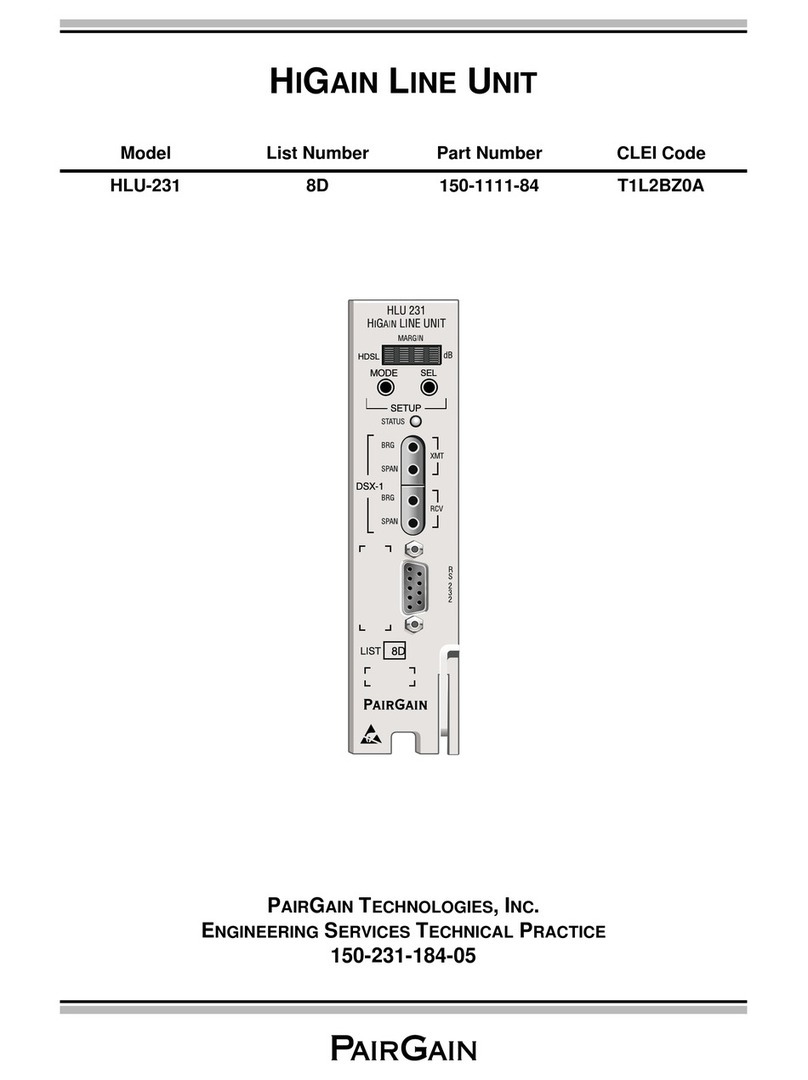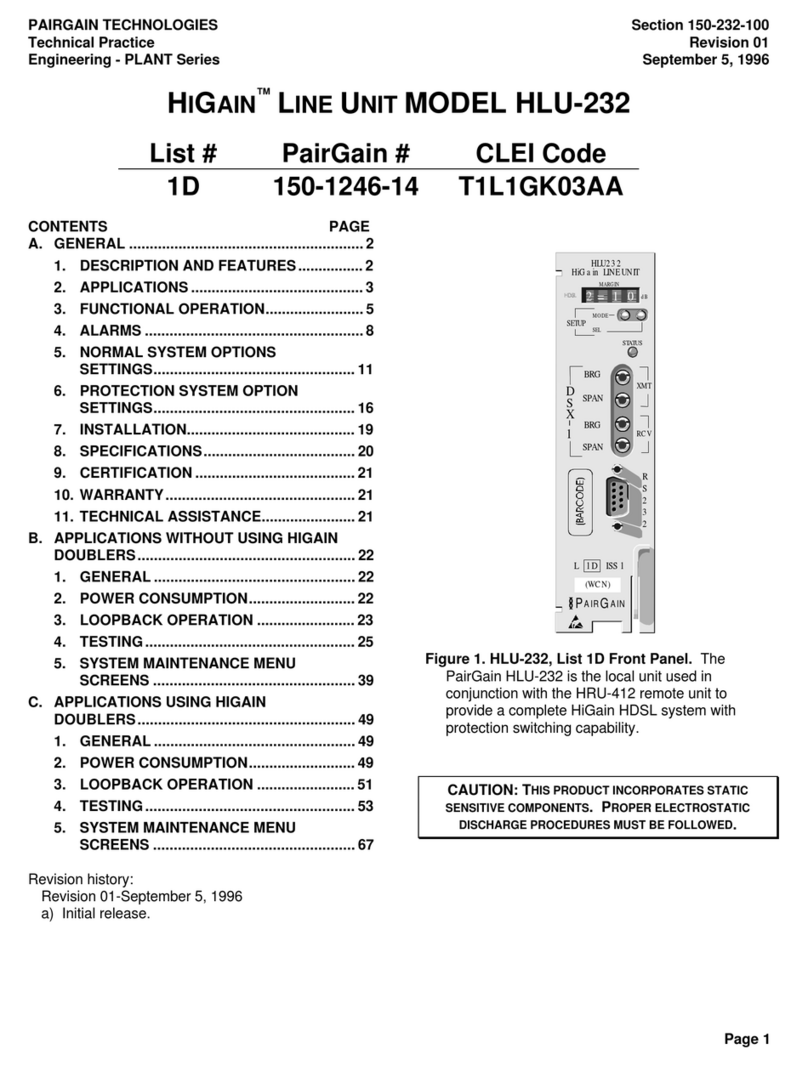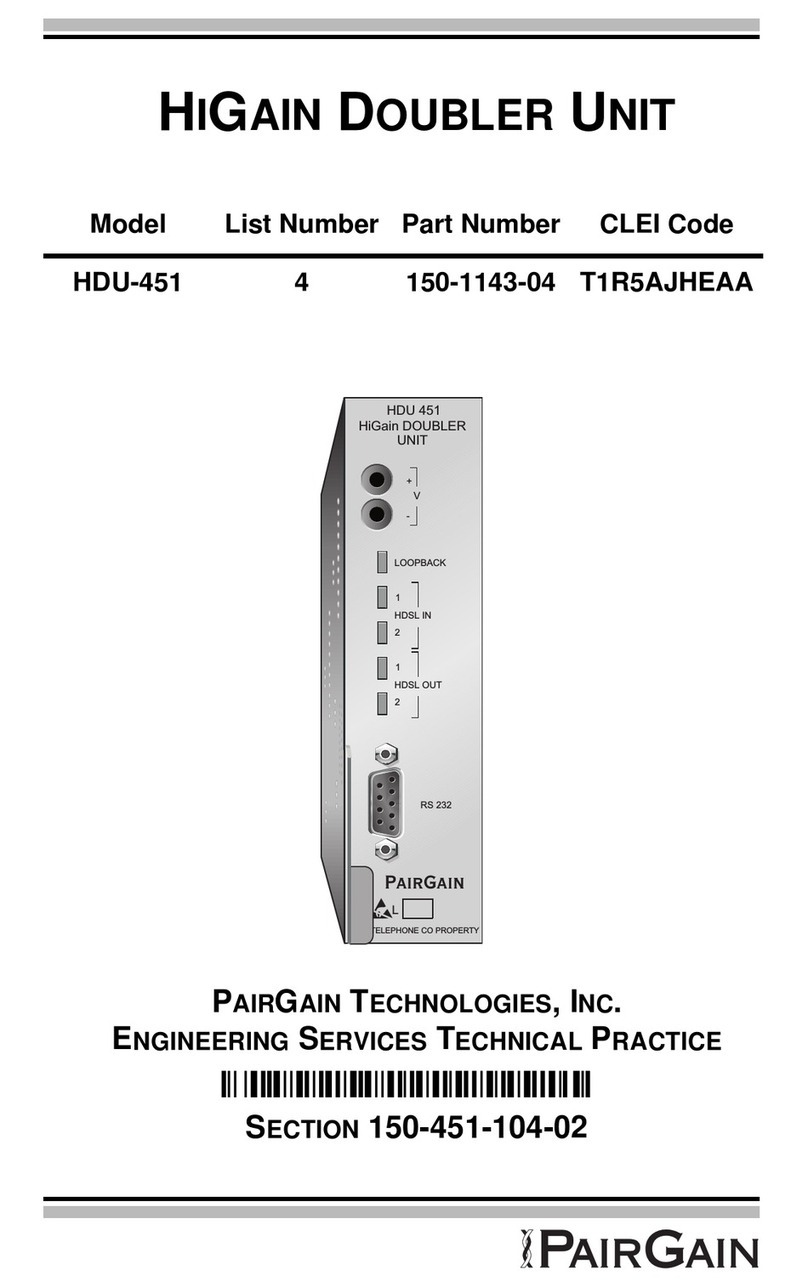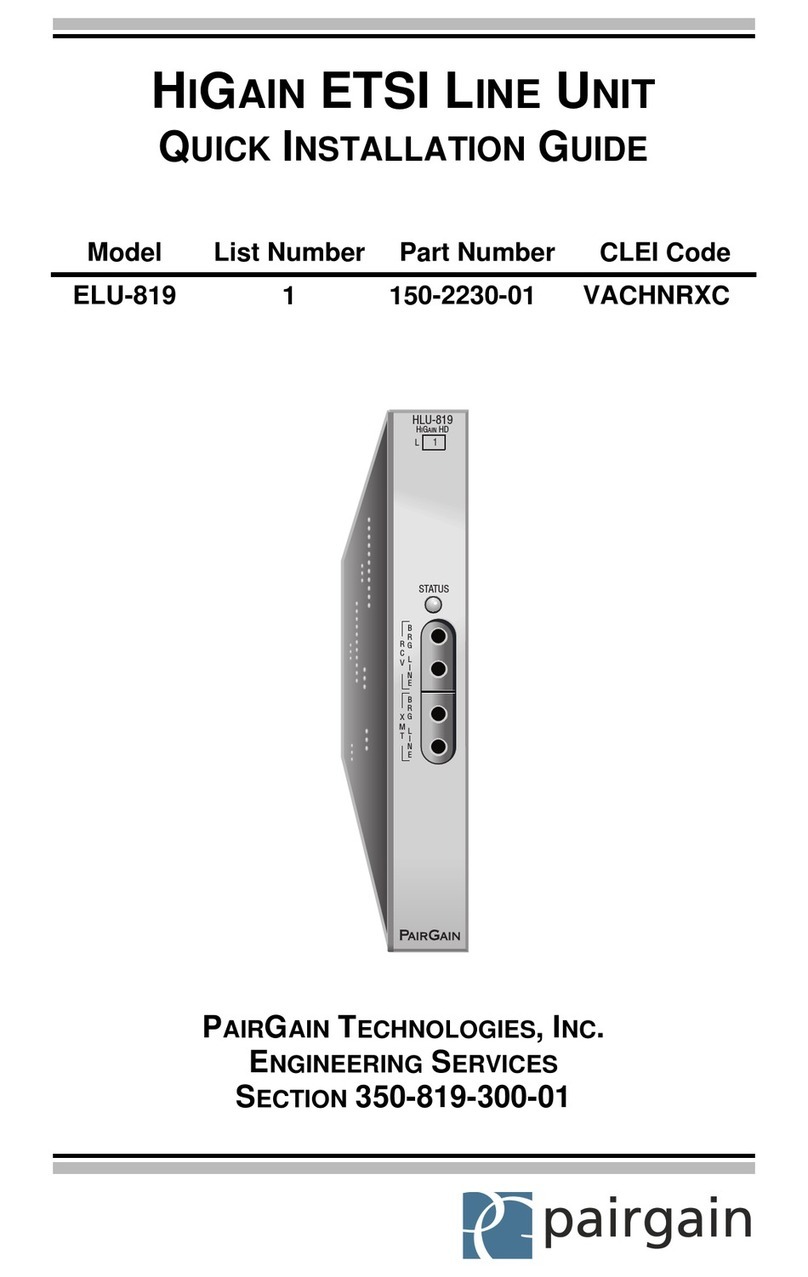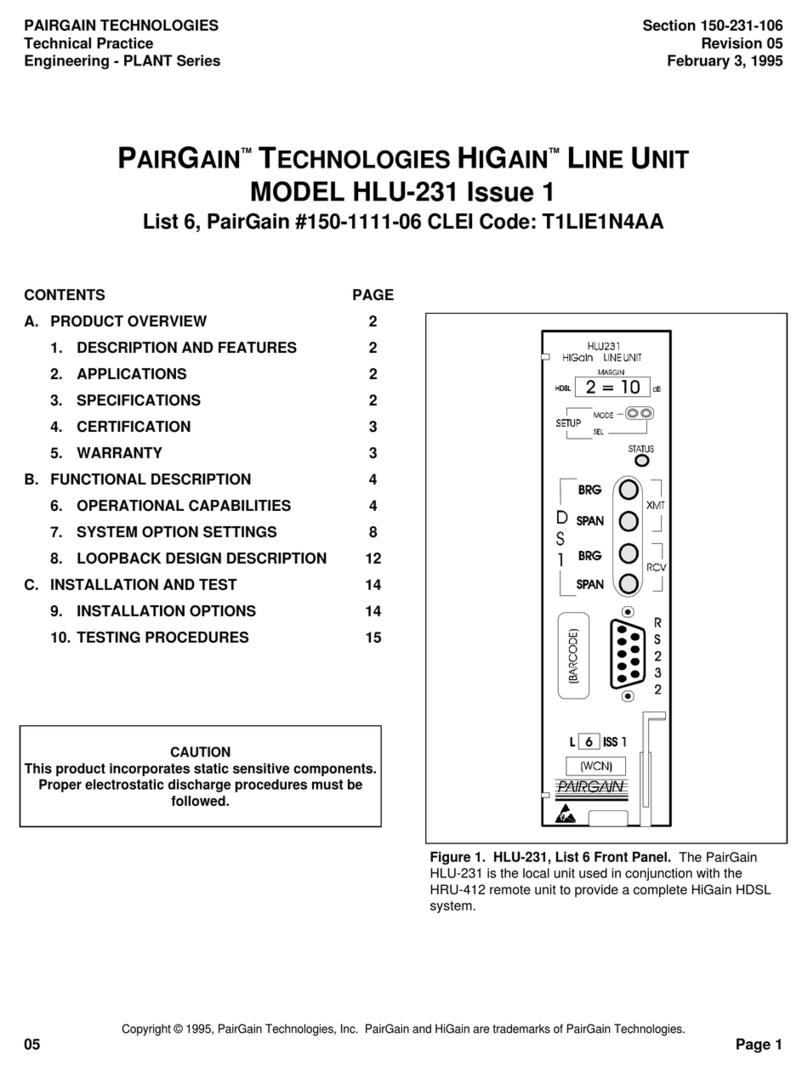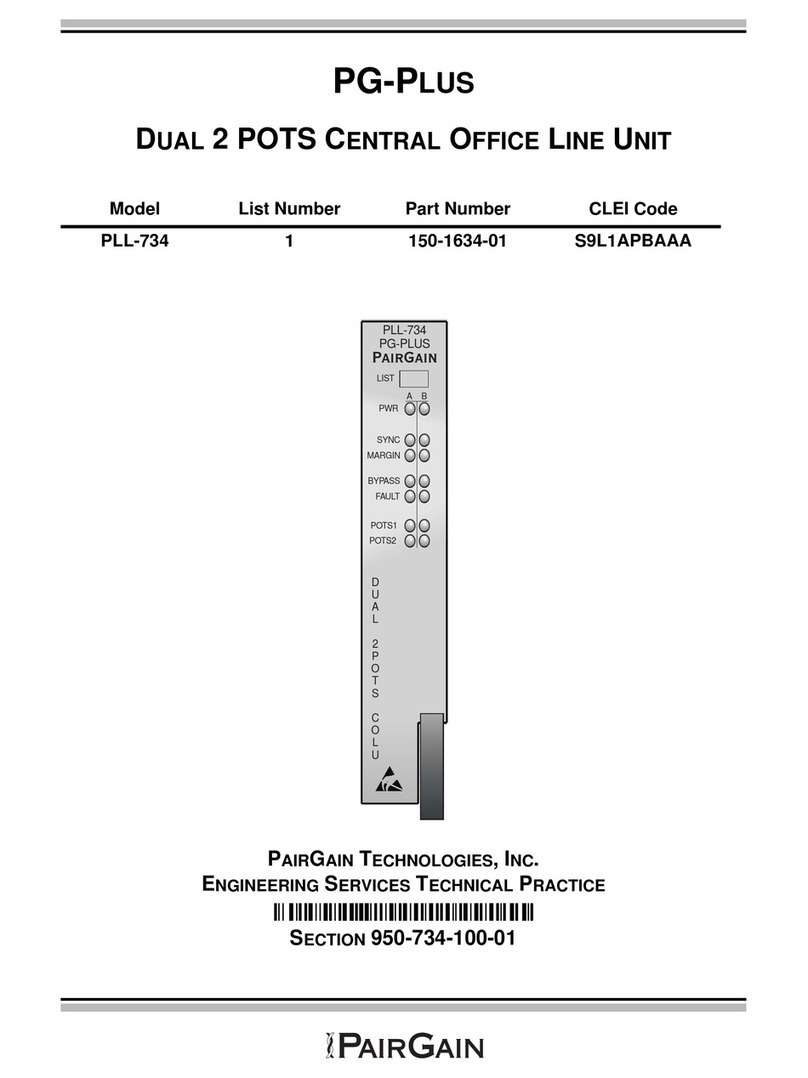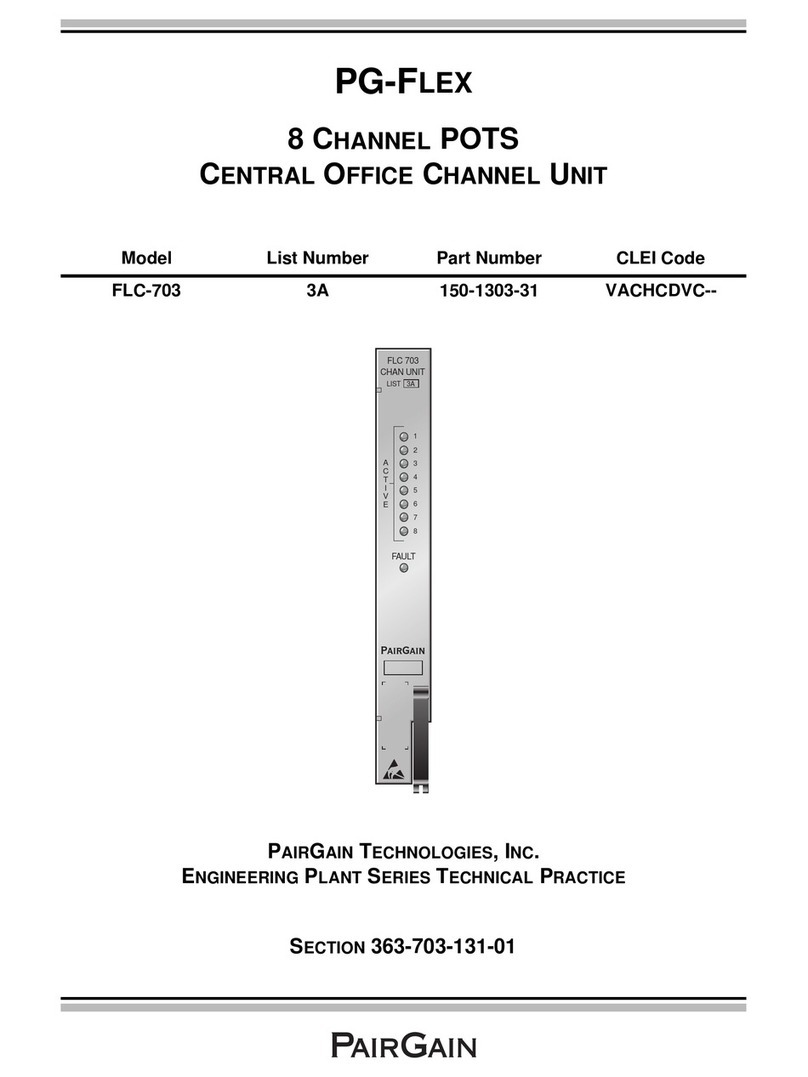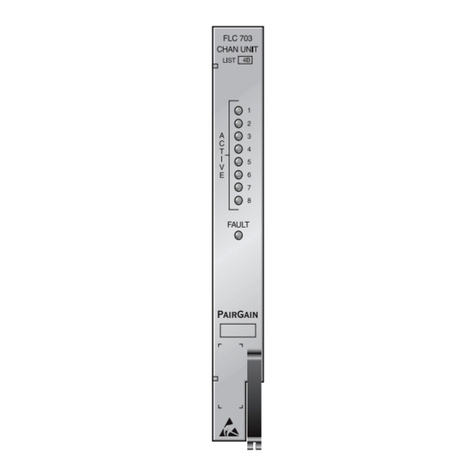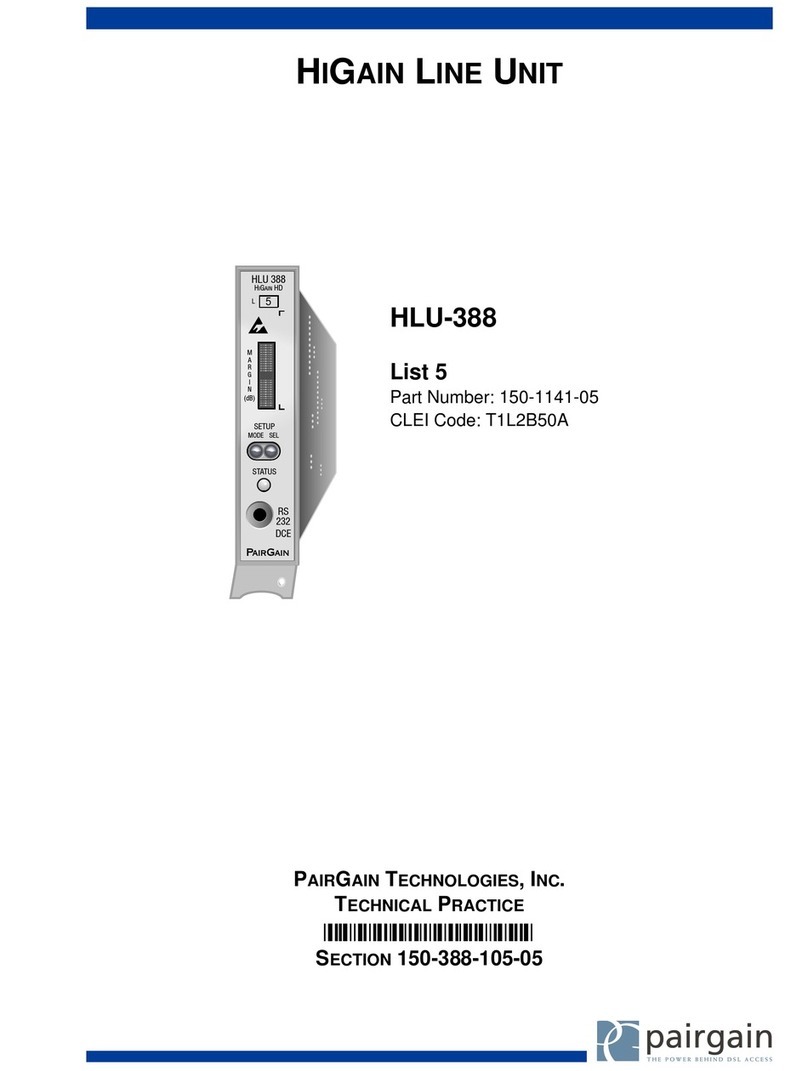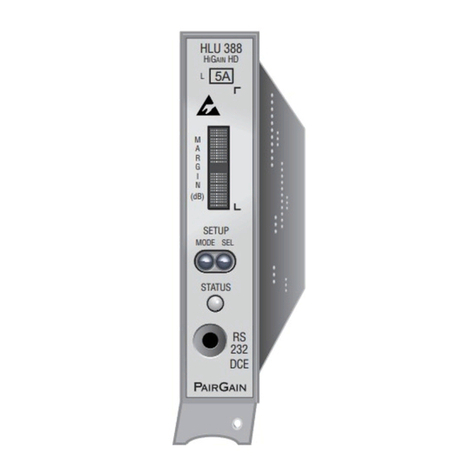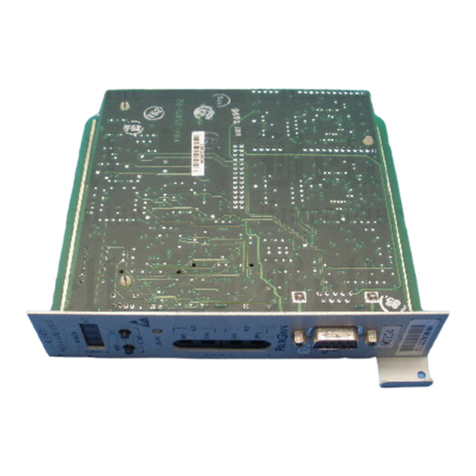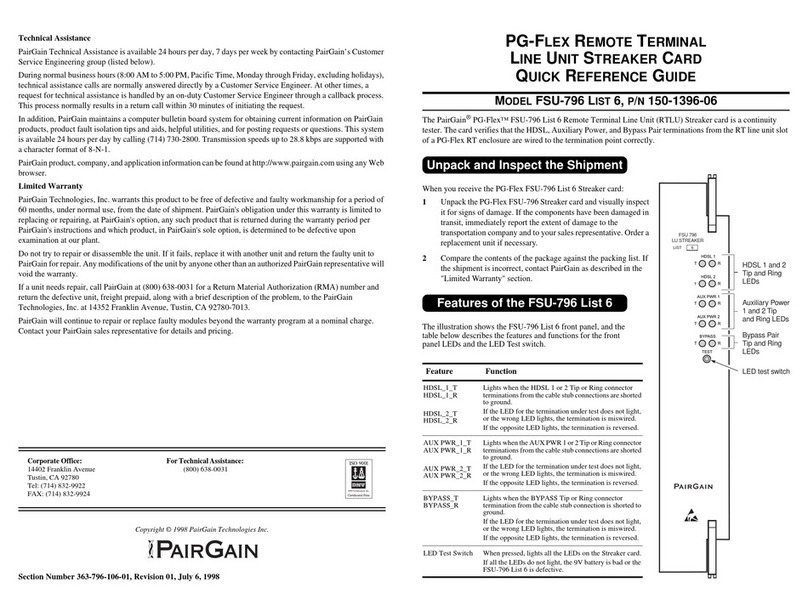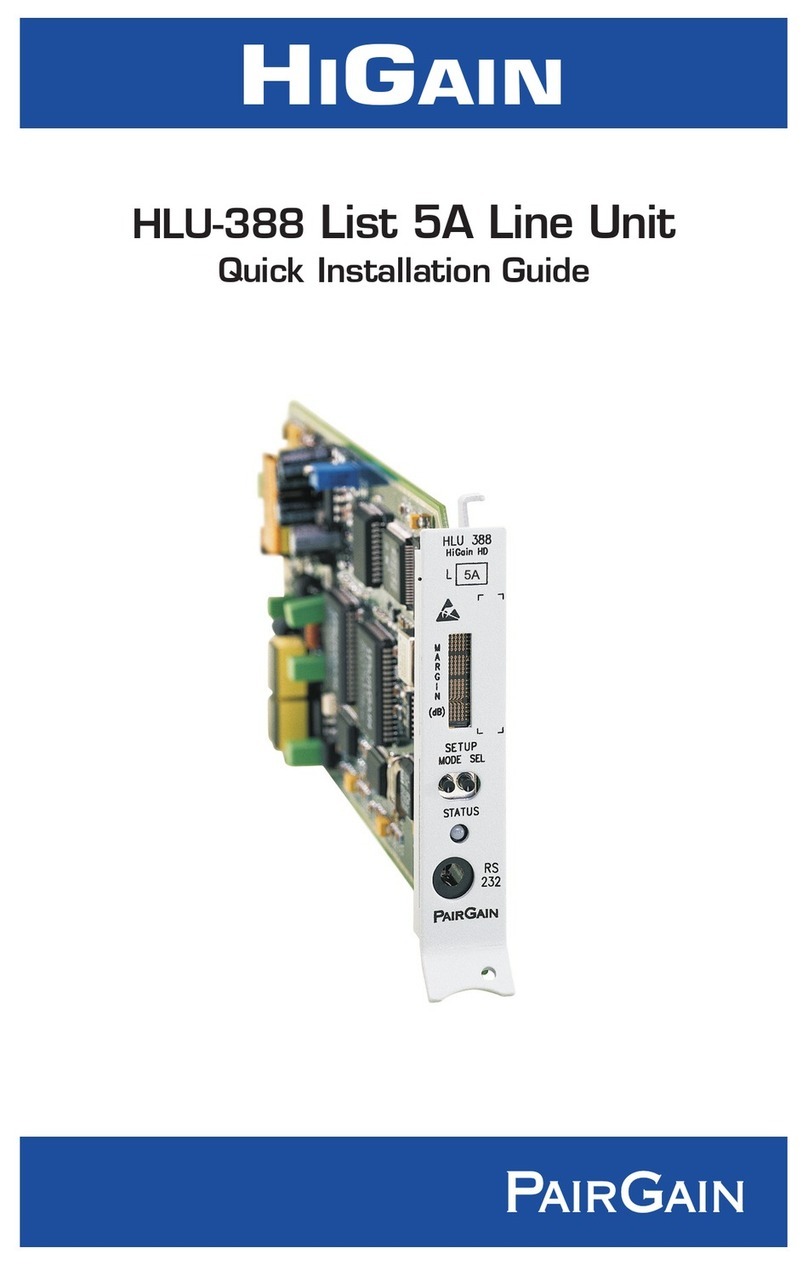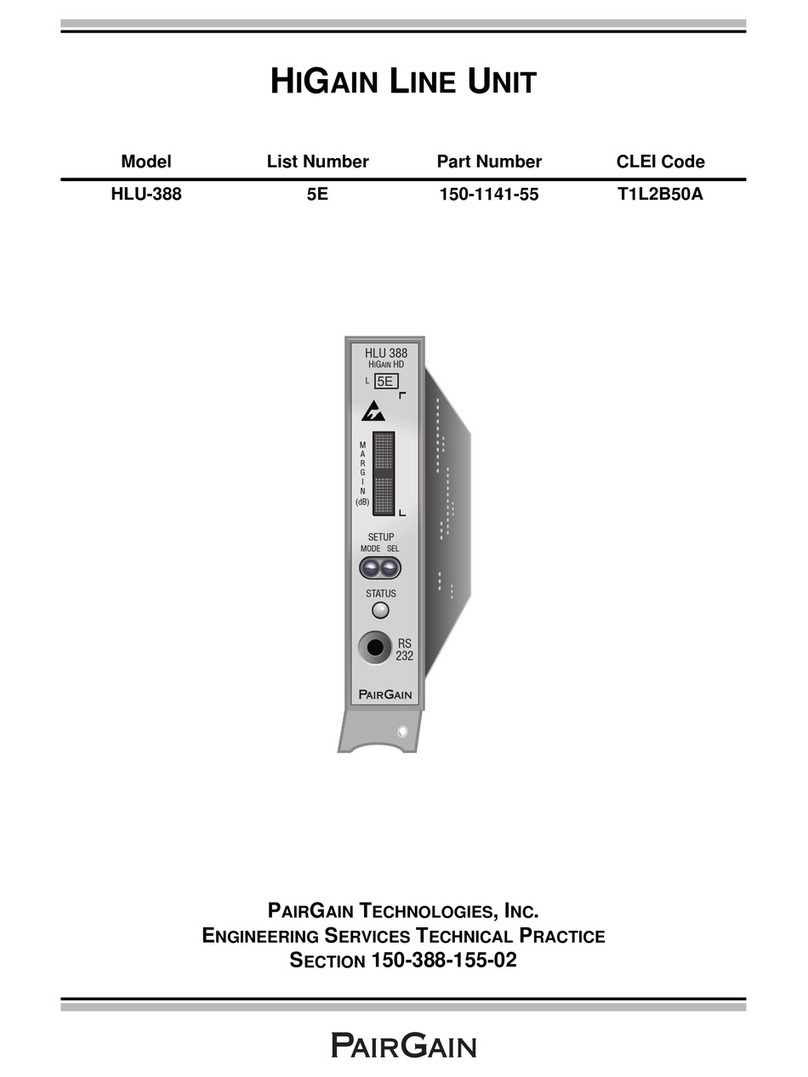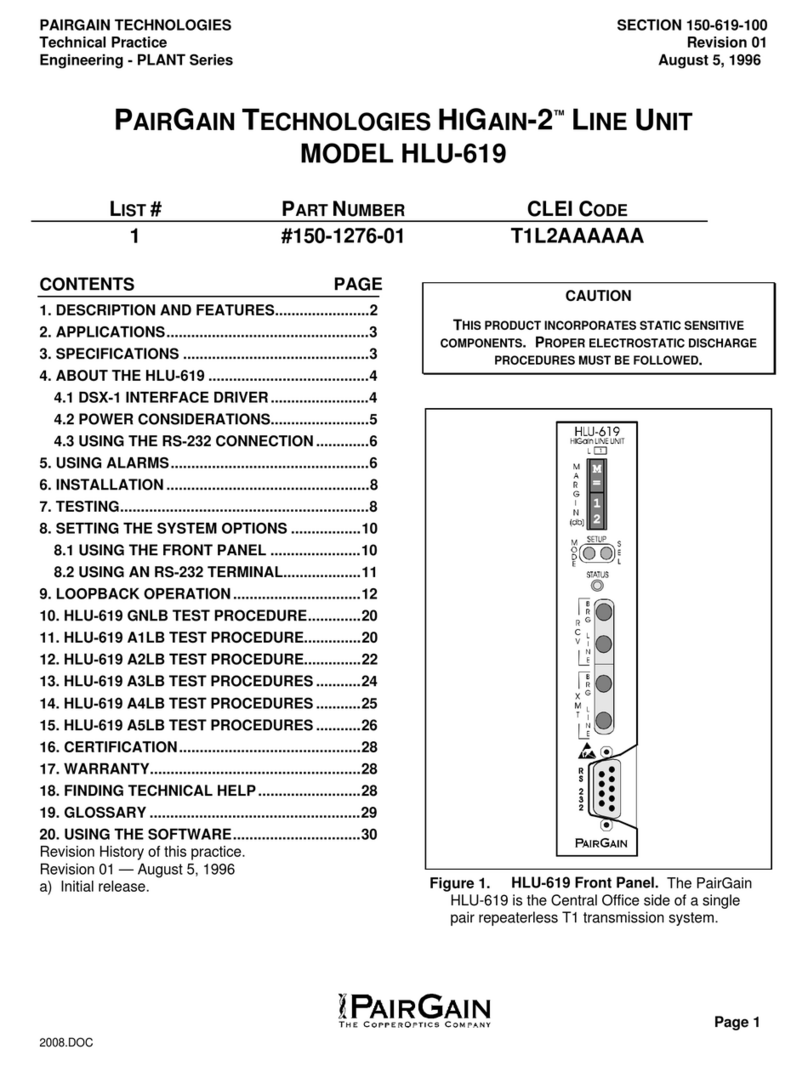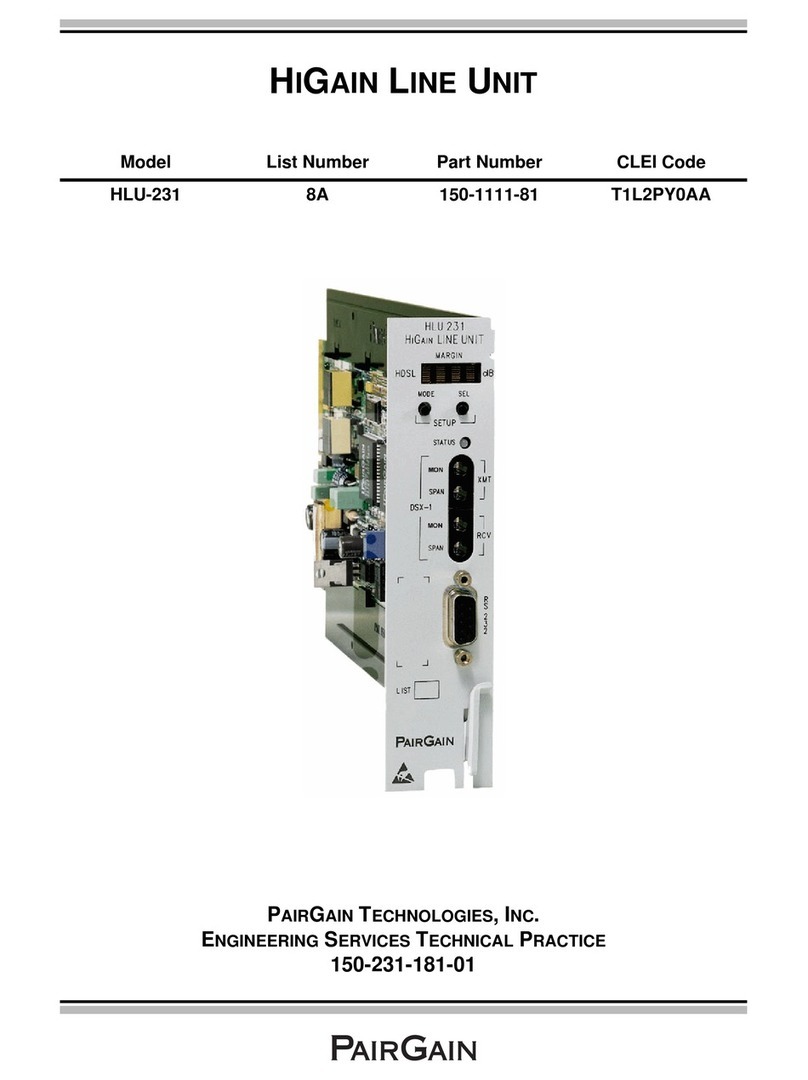
Revision 02 January 31, 1997 Section 150-231-172
HiGain Line Unit HLU-231 PairGain Engineering - Plant Series Page 3
1.3 The HLU-231, List 7B is identical to the HLU-231, List 7D except for an additional 200V Power
Feed (PWFD) option setting. This 200V setting forces the HLU's simplexed line voltage to its 200
volt output level for all applications.
1.4 In contrast to the List 7B, the List 7D's PWRF option has only two settings, ENABLE (ENA) and
DISABLE (DIS). The DIS prevents the HLU from ever applying its simplex line voltage to the two
HDSL pairs. This setting is used to prevent craft personnel from being exposed to any voltage while
working on the cable pairs. The ENA setting is the normal choice and is the factory default setting.
It causes the HLU to apply 130 volts to the cable pairs for all non-doubler applications and
automatically switches to its 200 volt output level for doubler applications.
1.5 The new List 7B unit has been enhanced with a third choice, identified as 200 VOLT, to the PWRF
option. It forces the HLU to its 200 volt output level for all applications. The 130 volt output is
permanently suppressed. This 200 volt output is needed to provide a 200 volt source to power
remote equipment within the HiGain family (such as PCS remote radio parts) that require more
power than is normally available from the 130 volt HDSL line voltage. The ENA option should be
used for all other doubler and non-doubler applications. Note that the Unipolar/Bipolar switch
option S2, discussed in Section 6, applies to this 200 VOLT setting as it does to the normal ENA
setting.
1.6 As with all HLU option settings, the 200 volt setting can be selected from either the front panel
option setting procedure or from the System Settings screen of the maintenance terminal interface.
The message that identifies this setting on the front panel display is "200". On the System Settings
screen it is called "200 VOLTS". The selection procedure for it is the same as for all HiGain
options.
2. APPLICATIONS
2.1 The HiGain system provides a cost-effective, easy to deploy method for delivering T1 High Capacity
Digital Service (HCDS) over metallic pairs. The fiber-like quality service is deployed over two
unconditioned, non-loaded copper pairs. Conventional in-line T1 repeaters are not required. Cable
pair conditioning, pair separation and bridged tap removal are not required. The performance of the
List 7B is identical to that of the List 7D and is completely independent of whether or not the PWRF
option is set to ENA or 200V.
2.2 The general guidelines require that each loop have less than 35 dB of loss at 196 kHz, with 135 ohms
driving and terminating impedances. Table 1 provides a guide for the loss of various cable gauges
at 196 kHz and 135 ohms. The table applies to the HDSL cable pairs between the HLU, HRU and
HDU modules. Without specific insertion loss measurement data, add 3 dB for each bridged tap and
1 dB for each cable gauge change.
2.3 The HiGain system operates with any number of other T1, POTS, Digital Data Service (DDS) or
other HiGain systems sharing the same cable binder group. HiGain systems can be used with
customers requiring DS1 service on a temporary or permanent basis. The HiGain system also
provides a means of quickly deploying service in advance of fiber-optic transmission systems. With
the HiGain system, service can be provided within hours. Fiber optic systems can be installed at a
leisurely pace and cut-over from the installed HiGain system when convenient to do so. The
installed HiGain system can then be easily removed and utilized elsewhere.


